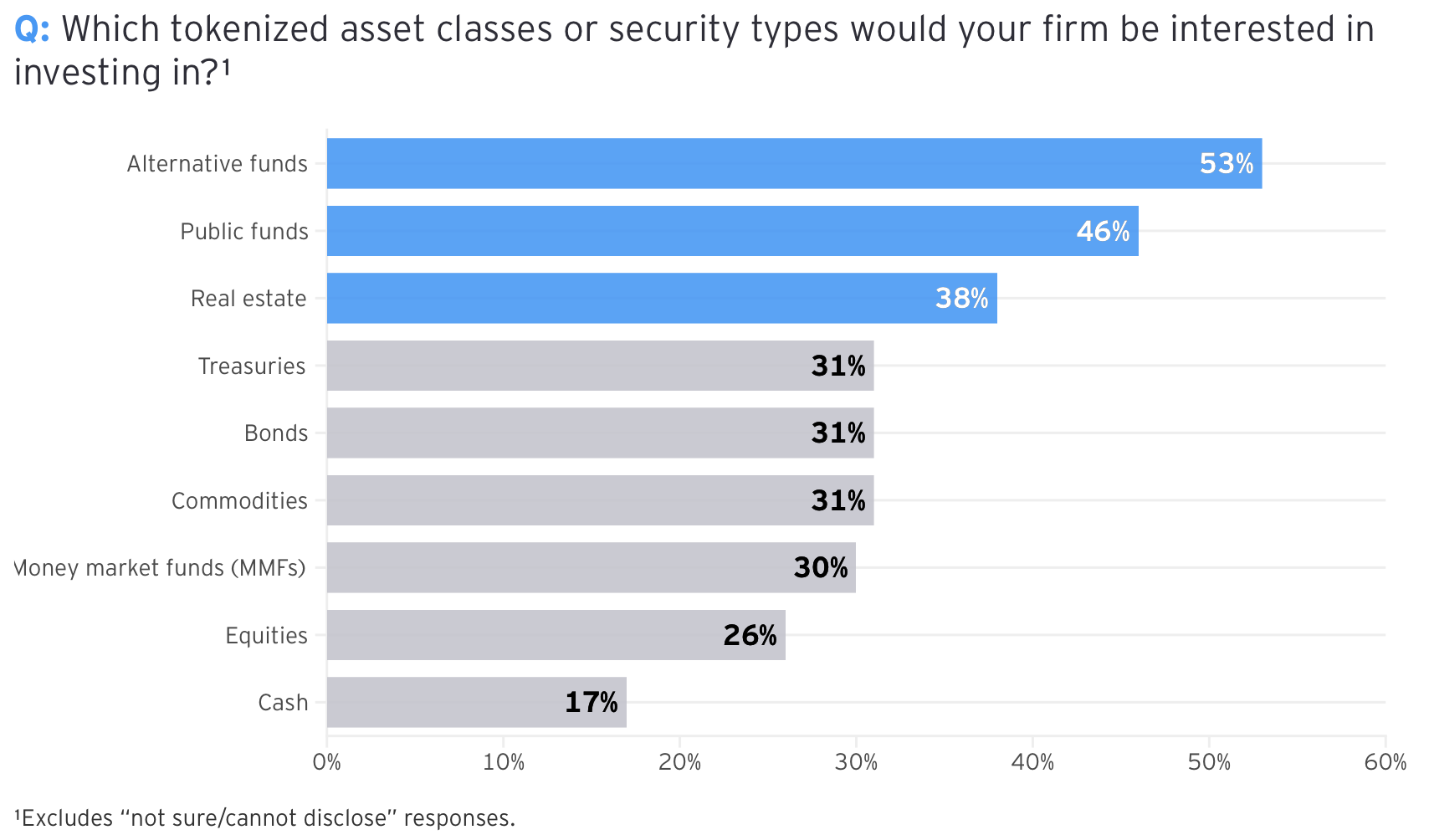This is a segment from the Forward Guidance newsletter. To read full editions, subscribe.
Plenty of people feel strongly about the tokenization/RWA space that appears poised to one day transform financial services — even if that change takes years to play out.
A bunch of those takes were expressed during day one of the RWA Summit in Brooklyn on Tuesday, as the promises and projections for the segment were both touted and questioned.
RWA, if you forgot, is short for real-world assets. In this context, it refers to the efforts to bring tokenized versions of such assets — from bonds to real estate — onto blockchains.
We have seen some big projections, with Standard Chartered, for example, expecting the tokenized RWA market to hit $30 trillion by 2034.
Various executives stated what they acknowledged to be obvious, but still critical: The specific utility and benefits (and the economics behind that) will drive tokenization forward.
“Rather than asking the question of what can I do with the technology, I think adoption is going to come from what are the issues that investors are facing?” said Fidelity’s Cynthia Lo Bessette. “What are the pain points or expensive operations, and what can we do to solve those pain points?”
A March survey by EY-Parthenon found that 52% of asset managers cited access to new investors and capital as the main driver of tokenization for their firms. Ranked second, at 46%, was cost savings and lower administration fees.
On the latter point, Franklin Templeton’s Roger Bayston mentioned the price difference in the transfer agency process. To clear 50,000 transactions under the legacy system, it’d cost about $1 per transaction, so roughly $50,000. With blockchain: $1.52 total.
That got the attention of Franklin Templeton CEO Jenny Johnson, he noted.
The asset management giant’s Franklin OnChain US Government Money Fund had $435 million in assets, as of Sept. 30. BlackRock more recently built a competing product that surpassed $500 million in assets in July.
These money market funds contribute to the $12 billion or so tokenized RWA category, which is separate from the $170 billion or so market capitalization of stablecoins.
Securitize’s Eric Ervin said during a panel I moderated at Permissionless earlier this month that he believes the BlackRock fund alone could reach $50 billion in assets in the next few years.
Another EY-Parthenon finding is below:

CoinFund president Chris Perkins said the $7-plus-trillion-per-day foreign exchange market offers “an opportunity set” for stablecoins that is “just staring everyone in the face…because of the instant settlement.”
Potential CFTC clarity on how firms can use blockchain tech to hold and transfer non-cash collateral could be a major unlock for tokenization adoption, Perkins added.
While Dragonfly’s Rob Hadick noted stablecoins’ utility, he voiced some skepticism about tokenization/RWA more broadly — at least for now.
“My guess is that equities, bonds — things that are regulated products that exist in the current financial system — it’ll be really hard to extract those and put them on a public chain in a place where unregulated entities are,” Hadick said.
And then there was Crucible founder Meltem Demirors, who spoke a bit more freely during a spar with Superstate CEO Robert Leshner in a discussion called “Debate: RWAs Are the Real Point of Crypto.”
Tokenization is like putting lipstick on a pig, she argued. You dress up an asset that is not liquid and doesn’t trade easily to make it crypto compatible. It’s “a worthwhile endeavor” and a great use of blockchain tech, but that doesn’t make it crypto.
Also, she made clear: “Taking a pile of dogshit, putting a wrapper around it and putting it onchain does not make it a better asset, does not create demand for it. Case and point: real estate.
“My objective is to bring dollars from outside of crypto onchain and into crypto,” Demirors added. “RWAs today are taking dollars from within crypto and giving them to traditional financial institutions, custodians, banks and — as we saw with the Stripe acquisition of Bridge — [payments service providers], who are going to benefit, not the crypto ecosystem.”
Even if you are bullish on the space, execs agree it will take a while before some of the multi-trillion-dollar projections are met.
Leshner noted that ultimately $500 trillion or so of assets will migrate “from bad ledgers to good ledgers” — aka move onchain, so those assets “can do more and be better.”
But, he added: “We are in the very, very, very preliminary stages of all of the wealth in the world changing where it lives.”
Will Nuelle, a general partner at Galaxy Ventures, said that while stablecoins are a “beachhead market,” a broader tokenization boom will take longer than two years, or even five years.
He added: “We think this is a two-decade story.”
 blockworks.co
blockworks.co